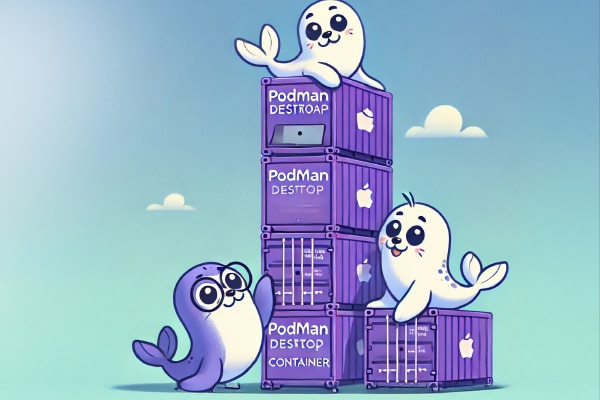Podman, the open source, daemonless container engine, is now available for Windows. By bridging the gap between Windows and Linux, it empowers developers to work in their preferred environments without sacrificing the power and flexibility of Linux-based containers.
The advent of containerisation has been a game-changer in the software development industry, enabling developers to package applications and their dependencies into a single object that can be run on any computing environment. This technology has led to the rise of various container management tools, with Podman emerging as a significant player. Podman, which stands for Pod Manager, is an open source, daemonless container engine that is now available for Windows, offering a new level of flexibility and efficiency for developers who operate within the Microsoft ecosystem.
Understanding Podman
Podman is a next-generation container management tool under the umbrella of the Linux Foundation’s Cloud Native Computing Foundation (CNCF). It provides a similar command-line interface (CLI) to Docker, which many developers are already familiar with, but with a unique architectural approach. Unlike Docker, Podman operates without a central daemon. This design choice eliminates the need for a single, long-running background process and instead allows each command to run in its own isolated process. This not only enhances security by reducing potential attack vectors but also simplifies system architecture and resource consumption.
Podman’s evolution and Windows compatibility
Initially tailored for Linux, Podman has been adapted to function seamlessly on Windows. This adaptation is a testament to the growing demand for versatile development tools that can cross the boundaries of operating systems. For Windows users, Podman provides the ability to manage Linux-based containers through a remote Podman service running on a Linux machine. This cross-platform capability ensures that developers are not confined to a single operating system and can work within a mixed OS environment without compromising on functionality.
Key features and benefits of Podman for Windows
Daemonless architecture: The absence of a central daemon in Podman’s design translates to lower system resource usage and a smaller attack surface, which is crucial for maintaining secure container operations.
Docker compatibility: Podman’s CLI is designed to be a drop-in replacement for Docker, which means developers can switch to Podman without having to alter their existing workflows or learn new commands.
Rootless containers: One of the standout features of Podman is its support for running containers without requiring root privileges. This rootless mode is a significant security enhancement, as it limits the scope of damage in the event of a container compromise.
Pods concept: Borrowing from Kubernetes, Podman introduces the concept of pods—groups of containers that share the same network namespace. This feature allows developers to manage related containers as a single entity, closely mimicking the behaviour of a Kubernetes pod.
OCI standards compliance: Podman adheres to the Open Container Initiative (OCI) standards, ensuring that it works well with other tools in the container ecosystem and maintains compatibility across different platforms.
Getting started with Podman on Windows
To leverage Podman on a Windows machine, developers must first establish a Linux environment that the Windows Podman client can interact with. This can be achieved through the Windows Subsystem for Linux (WSL), a dedicated virtual machine, or a remote Linux server. After setting up the Linux host, Podman can be installed, and the Windows client can be configured to connect to the Podman service on the Linux side. This setup allows for the seamless management of Linux containers directly from a Windows environment.
Practical applications and advantages
Podman for Windows is particularly advantageous for development teams that operate in environments with diverse operating systems. It enables seamless development, testing, and management of Linux containers on Windows machines. Moreover, the security benefits of Podman’s rootless mode cannot be overstated, as it provides an additional layer of protection against privilege escalation attacks, which are a common concern in containerised environments.
Podman also shines in its ability to handle multiple container images and its efficient use of system resources. Developers can work with different versions of container images without worrying about conflicts or the overhead of running a central daemon. This efficiency is particularly beneficial for continuous integration/continuous deployment (CI/CD) pipelines, where rapid testing and deployment of containers are critical.
The future of container management with Podman
As the containerisation landscape continues to evolve, tools like Podman that offer cross-platform support and enhanced security features are set to play a pivotal role. The introduction of Podman for Windows is a clear indication that the future of software development and deployment will be increasingly flexible, secure, and efficient. With its robust feature set and compatibility with existing Docker workflows, Podman is well-positioned to become the go-to container management tool for developers across various industries.
Podman’s impact extends beyond individual developers to organisations seeking to modernise their infrastructure. By adopting Podman, enterprises can streamline their development processes, reduce overhead costs, and improve the security posture of their containerised applications. As more organisations embrace DevOps practices and seek to leverage the benefits of containerisation, Podman’s role in this ecosystem is likely to grow.
The availability of Podman for Windows represents a significant advancement in the field of container management. By bridging the gap between Windows and Linux, Podman empowers developers to work in their preferred environments without sacrificing the power and flexibility of Linux-based containers. With its daemonless architecture, compatibility with Docker, rootless mode, and adherence to OCI standards, Podman is set to revolutionise the way developers build, deploy, and manage containerised applications. As the technology matures and its adoption increases, Podman for Windows is poised to become an essential tool in the developer’s toolkit, shaping the future of software development for years to come.
















































































